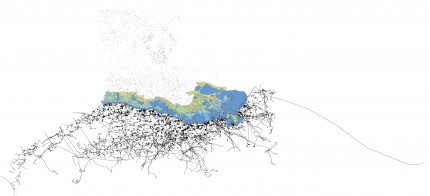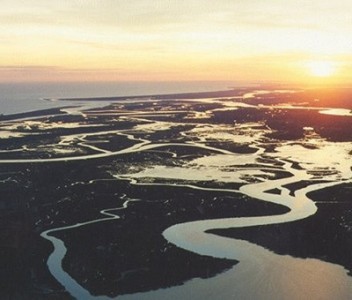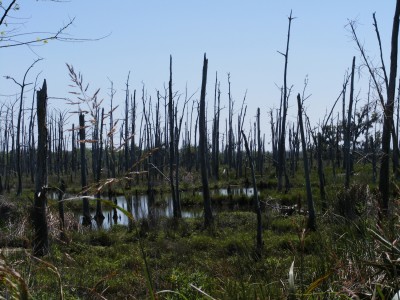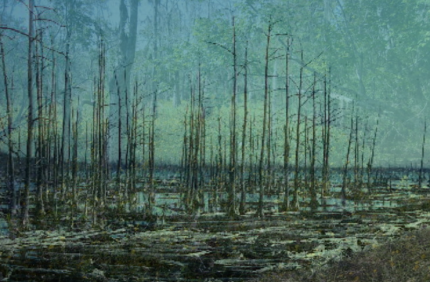{ecology of louisiana’s gulf coast oil & gas infrastructure}
{framework}
Louisiana’s oil and gas infrastructure is a complex system. As a physical infrastructure it consists of wells, pipes, off-shore oil rigs, refining stations, submerged barges, and other technologies. It is also deeply embedded in natural ecosystems including freshwater wetlands, estuaries, and ocean environments. The built infrastructure has had a significant and often devastating impact on the surrounding wetlands. Canals cut through the topography and vegetation with impacts on the landscape much more profound than their initial mark.
{process}
There are three primary processes (and three engaged systems) occurring in the ecology of oil and gas infrastructure.
1. dredging canals & topography (incision)
2. salt water intrusion & hydrology (infiltration)
3. fragmentation & marshland vegetation (disintegration)
{dredging canals & topography}
Canals cut through the fabric of the wetland ecosystem, which fragments plant life and allows water to rapidly flow through the environment. The cutting of canals has converted marshland to open water while spoil banks have replaced the marshlands with an upland environment.The incision of an oil canal removes sediment from the ground in long trenches and piles them in spoil banks along the edges of the canal. The vegetation on these banks becomes impounded and cut off from the natural flow of water through the marsh. Spoil banks also restrict sheet flow of water across the surface of the marsh which further oxidizes and drowns the marsh. As the spoil banks erode, the canals widen and increase saltwater intrusion, exacerbate coastal erosion, and ultimately convert wetlands to open water.
In Louisiana there are 10,000 miles of underwater oil infrastructure that has contributed to sever land loss. “It is estimated that the oil and gas industries were responsible for 30 to 59 percent of coastal wetlands loss between the years 1955 and 1978,” (http://saveourwetlands.org/news-paper.htm).
{saltwater intrusion & hydrology}
Saltwater intrusion is the influx of saline water into freshwater ecosystems. It can be caused by natural or human-induced events such as hurricanes, coastal wells, navigation channels, or oil field canals. The Gulf Coast Wetlands is comprised of a variety of freshwater, intermediate, and brackish estuarine environments which are increasingly threatened due to saltwater intrusion. Canals have cut straight channels into the silty marsh floor which allows salt water from the Gulf to flow more easily inland, dramatically altering the Gulf Coast hydrology. Additionally, saltwater is more dense than freshwater and the two combine to create a stratified water column that can lead to severely hypoxic conditions. Thus in addition to increased salinity levels, decreased oxygen levels adversely affect the wetland ecosystem. This impacts wildlife such as fish populations, however plants and benthic invertebrates (like clams) are affected more severely as they cannot relocate to more favorable conditions.
{fragmentation & marshland vegetation}
Wetland vegetation communities have become increasingly fragmented due to the incision of canals and land subsidence which has been amplified by the extraction of subsurface hydrocarbons. Furthermore, the vegetated communities adjacent to canal dredging sites often changes in composition where the spoil banks become colonized by exotic species.













